Google Cloud Storage
This article outlines the steps necessary to set up a Google Cloud Storage bucket as a GrowthLoop destination and begin exporting audiences for activation. ##
Google Cloud Storage
This article outlines the steps necessary to set up a Google Cloud Storage bucket as a GrowthLoop destination and begin exporting audiences for activation.
Requirements
- Create a Google Cloud Storage service account and save its account key as a JSON file
- Create a Google Cloud Storage bucket
If you already have a service account and have stored its key as a JSON file, you can skip to Setting Google Cloud Storage as a Destination.
Creating a Service Account
In order to export to a Google Cloud Storage bucket, you must have a service account with permissions to manage that bucket. Here are instructions for setting up a service account. Make sure to assign your service account the Editor role (available as one of Google Cloud Platform’s Basic Roles).
Finding Your Service Account Key (JSON)
JSON keys are files that allow external services like GrowthLoop to engage your service account. We generally recommend creating a new service account to connect GCS to the GrowthLoop application. If you already have a JSON key for your service account, skip to Setting Google Cloud Storage as a Destination. If you do not, you will need to create a new one using the steps below. Make sure to save your JSON key file in a safe and memorable place **- this key is not recoverable**, and you will need to create another if you lose it. You have a limit of 10 keys per service account.
To create a key, you need to have administrative privilege over keys for your storage bucket. If you receive a permissions error during the key setup process, ask your Google Cloud administrator to either 1) provide you with key creation permissions, or 2) create the key themselves and provide you with the JSON.
First, log in to your Google Cloud Platform account and search the name of your storage bucket in the Search bar at the top of the screen. Note: Even if the dropdown says “No results,” press Enter and your bucket will appear on the next screen.

Select your desired storage bucket.
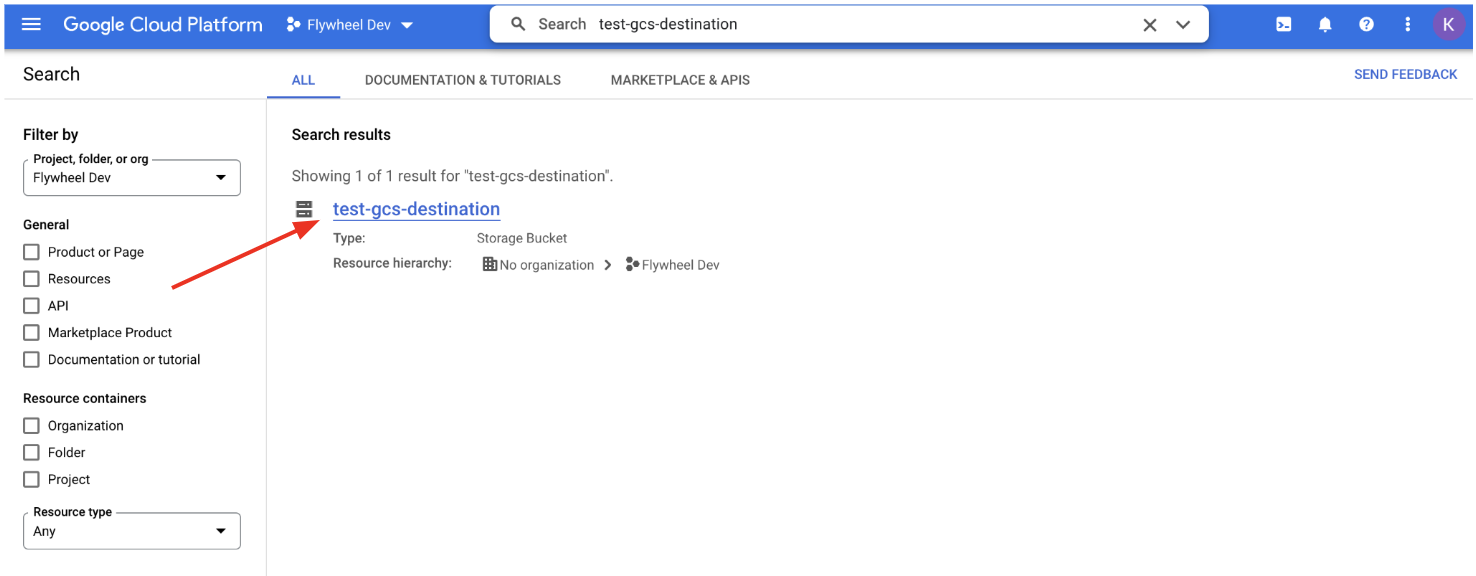
Click Permissions.
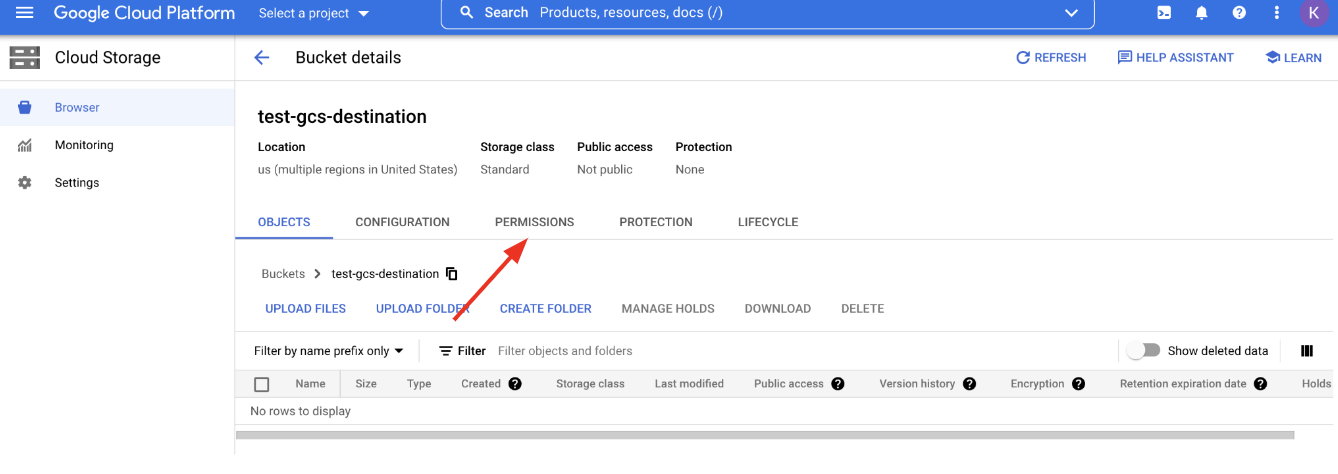
Scroll down to the list of Permissions and find the service account that is assigned storage privileges (in this case, the top one). You can tell which users are service accounts by looking for “gserviceaccount” in the Principal column. Copy or screenshot the name of this service account.

In the Search bar, type “Service Accounts” and select Service Accounts from the dropdown.
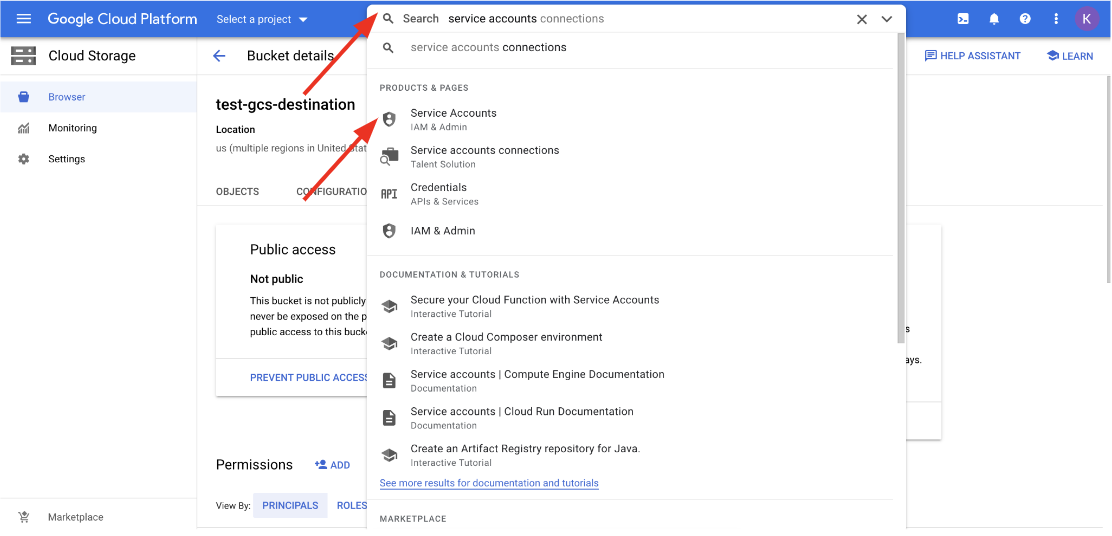
From the list of service accounts, click into the one that matches the one you copied down from your storage bucket.
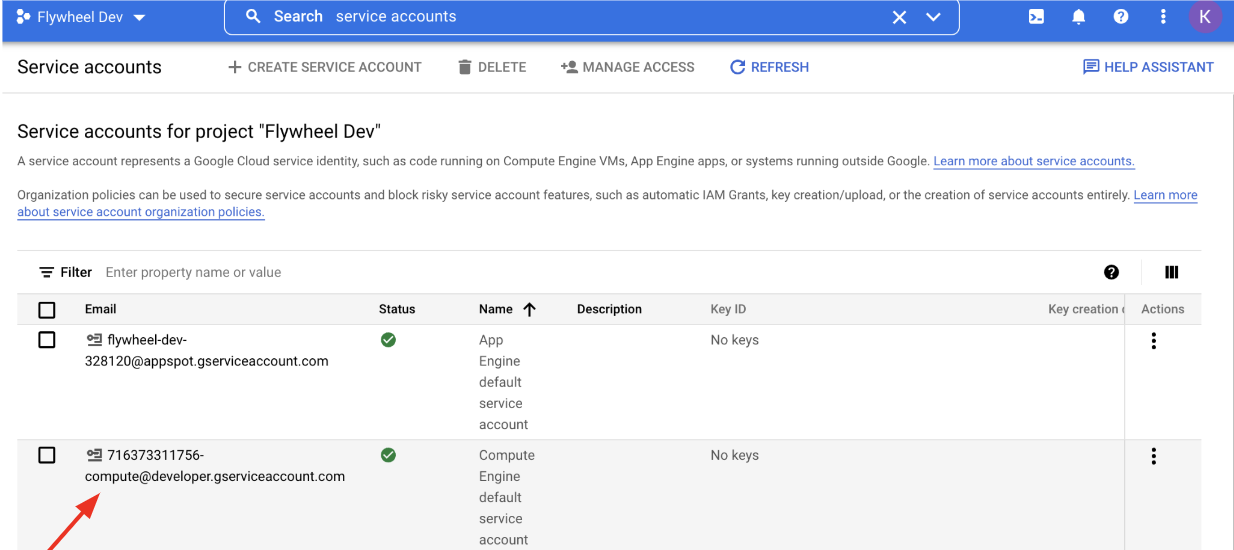
Navigate to Keys. Choose Create New Key from the Add Key dropdown.

Select JSON and click Create. The new key file will automatically download to your computer as a JSON file. Save it in a secure, memorable place.

Now that you have a service account and service account key, you are ready to set Google Cloud Storage as a destination!
Setting Google Cloud Storage as a Destination
Select Destinations from the left rail of your GrowthLoop home screen.

Click New Destination on the top right.

Scroll down to the Buckets section and click Add GCS.
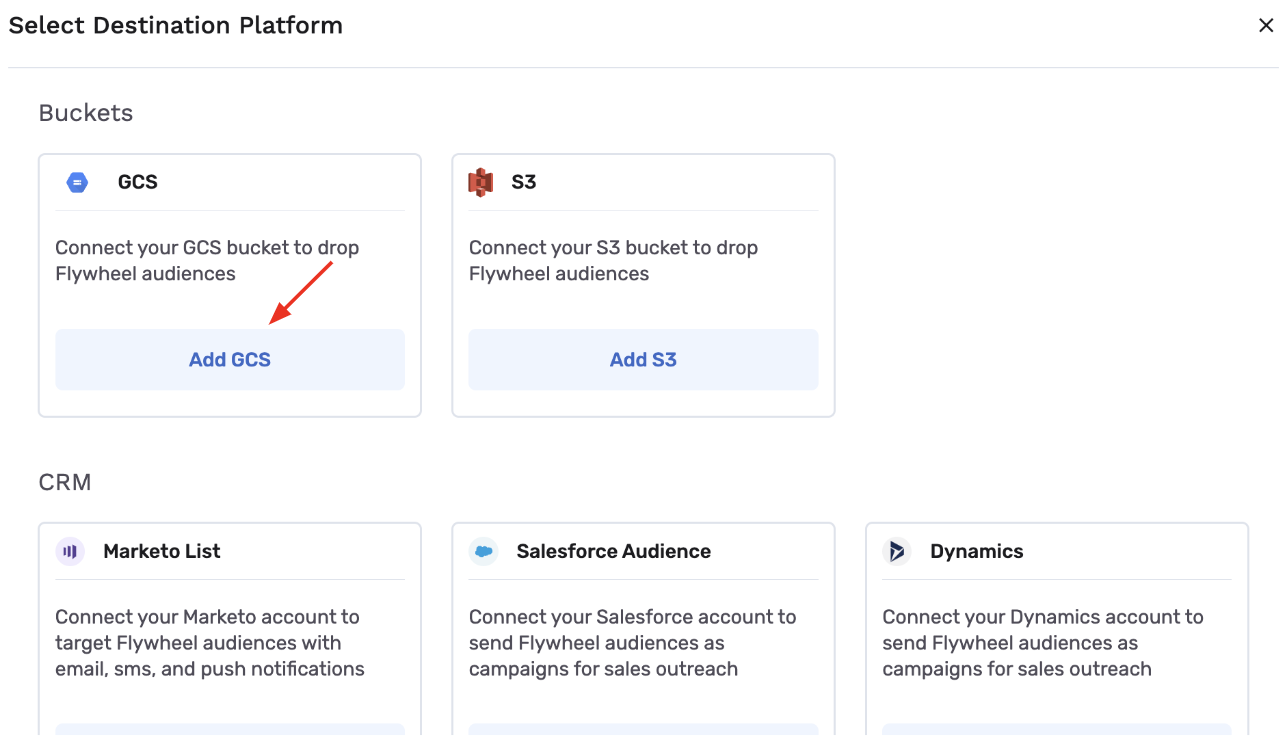
A modal window will prompt you to fill out Destination Info and Credentials.
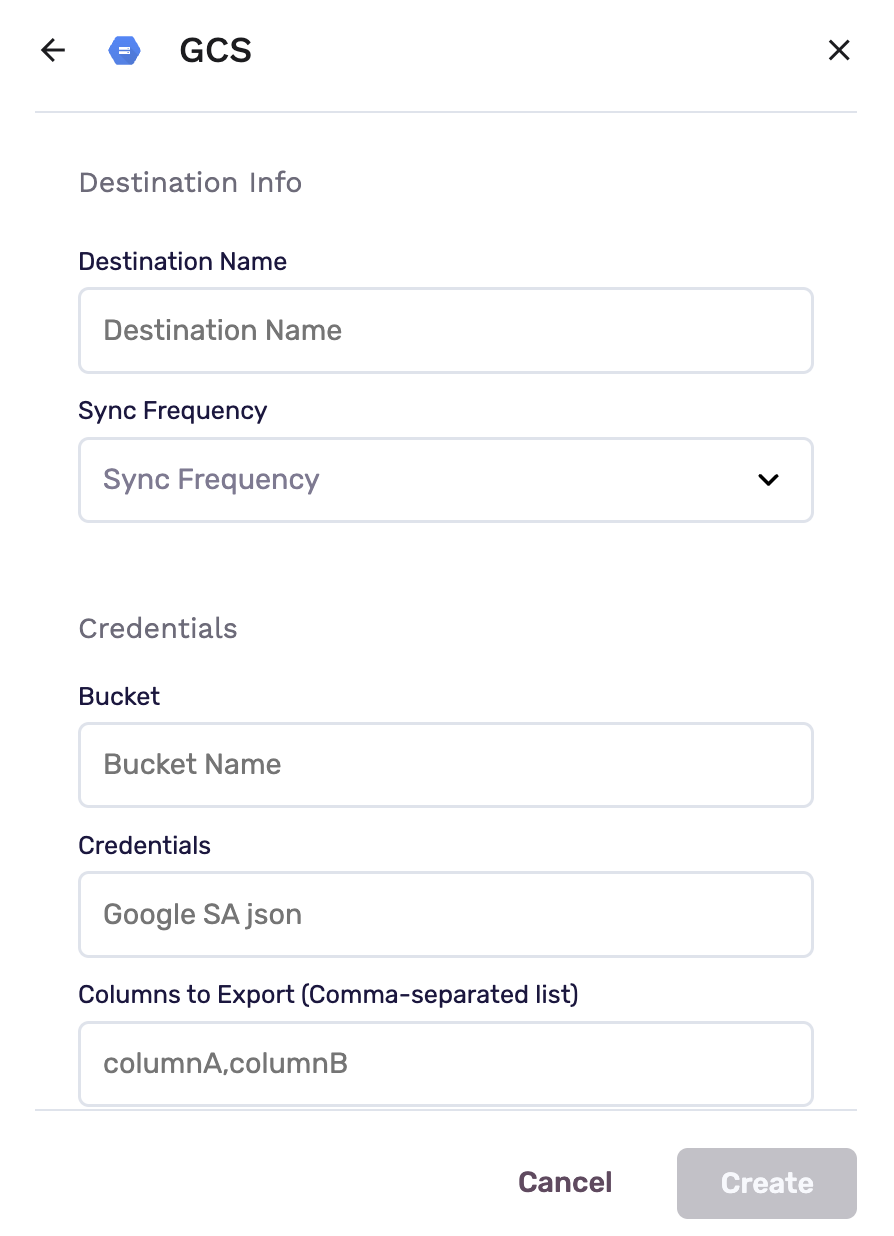
- Destination Name: A custom name for your destination.
- Sync Frequency: The frequency at which GrowthLoop will export audiences to your destination (hourly or daily).
- Bucket: The name of your Google Cloud Storage bucket.
- Credentials: Copy and paste the entire contents of your JSON key file here.
- Columns to Export: Columns that will be exported by default when you export an audience to GCS. Use the column names of the underlying datasets in your data warehouse. If you do not specify any column names, all columns will be exported by default.
Click Create. You are now ready to begin exporting to your Google Cloud Storage destination! You can confirm that your Google Cloud Storage bucket is connected by clicking Destinations on the left rail.

Exporting to Google Cloud Storage
When exporting to Google Cloud Storage, you will be prompted select an Export Type and Personalization Fields

- Export Type: Choose between Export All Records and Export Updates (Deltas).
- Export All Records: Each time your audience exports to GCS, a new record is created for every member of the audience.
- Export Updates (Deltas): Each time your audience exports to GCS, a new record is only created for new members of the audience.
- Personalization Fields: By default, GrowthLoop will export only the columns specified during destination setup (called Columns to Export). If you would like to add any additional columns to your export, do so here.
After exporting, a folder unique to your audience will appear in your Google Cloud storage bucket. This folder contains individual CSV files for each member of the audience.

Happy exporting!
Experiencing any issues connecting to Google Cloud Storage as a destination? Reach out to us at [email protected] and we’ll be in touch shortly!
Looking to connect other sales and marketing destinations for audience activation? Click Here to find more information in our Help Center!
Updated 3 months ago
